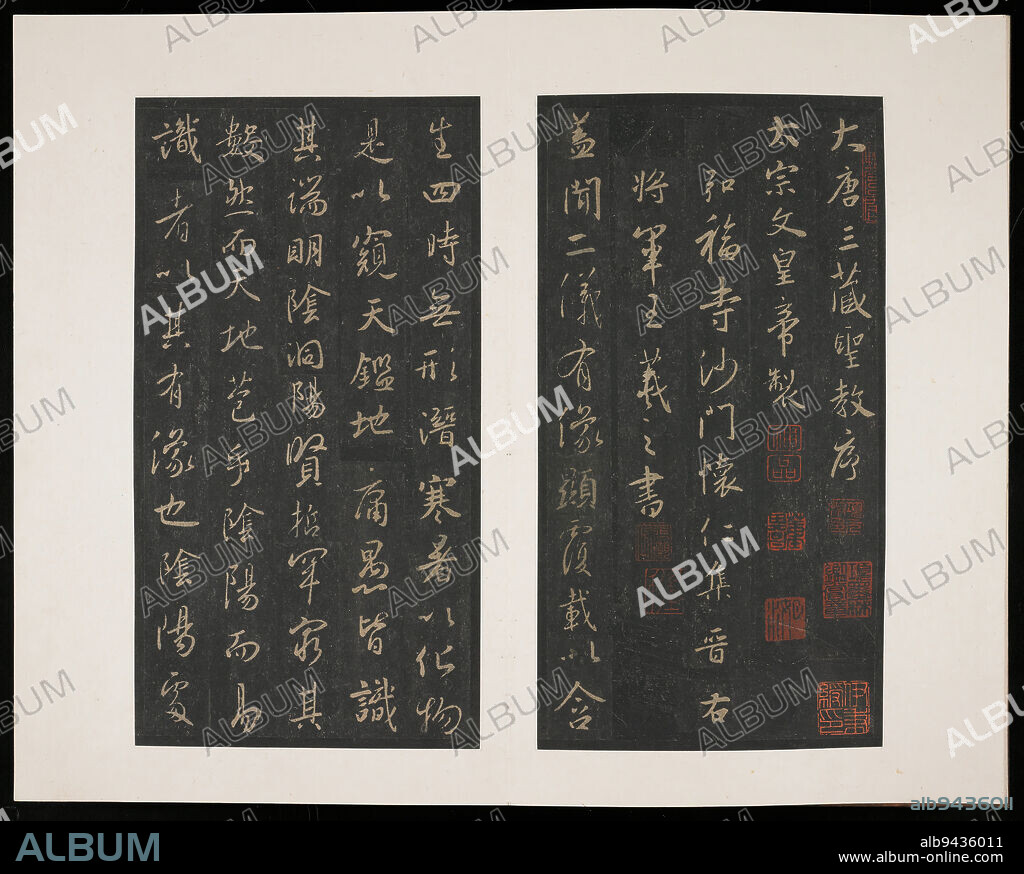alb9436011
Rubbings of the Sheng-chiao hsu Stele, 12th century, Wang Hsi-chih, Chinese, 303 - 361, 1 3/8 x 8 1/2 x 13 1/2 in. (3.49 x 21.59 x 34.29 cm), Ink on paper, China, 12th century, Wang Hsi-chih, one of the greatest calligraphers of all times, was undoubtedly the primary cultural prototype for the Ming literati. Wang came from an aristocratic family and preferred the company of Taoist and Buddhist monks to Confucian bureaucrats. A brilliant man of letters, he studied poetry, music, and calligraphy and sought the quietude of nature. Wang was a master of running script (hsing-shu) calligraphy. His innovative brush movements distinguished his work from the rigid and formal style of archaic clerical script. Wang's spontaneous, fluid writing served as the model for expressive calligraphy for centuries to come.

|
Añadir a otro lightbox |
|
Añadir a otro lightbox |



¿Ya tienes cuenta? Iniciar sesión
¿No tienes cuenta? Regístrate
Compra esta imagen

Descripción:
Ver traducción automática
Rubbings of the Sheng-chiao hsu Stele, 12th century, Wang Hsi-chih, Chinese, 303 - 361, 1 3/8 x 8 1/2 x 13 1/2 in. (3.49 x 21.59 x 34.29 cm), Ink on paper, China, 12th century, Wang Hsi-chih, one of the greatest calligraphers of all times, was undoubtedly the primary cultural prototype for the Ming literati. Wang came from an aristocratic family and preferred the company of Taoist and Buddhist monks to Confucian bureaucrats. A brilliant man of letters, he studied poetry, music, and calligraphy and sought the quietude of nature. Wang was a master of running script (hsing-shu) calligraphy. His innovative brush movements distinguished his work from the rigid and formal style of archaic clerical script. Wang's spontaneous, fluid writing served as the model for expressive calligraphy for centuries to come.
Crédito:
Album / quintlox
Autorizaciones:
Modelo: No - Propiedad: No
¿Preguntas relacionadas con los derechos?
¿Preguntas relacionadas con los derechos?
Tamaño imagen:
5155 x 4131 px | 60.9 MB
Tamaño impresión:
43.6 x 35.0 cm | 17.2 x 13.8 in (300 dpi)
Palabras clave:
CALIGRAFIA • CHINA • CHINO • COMPAÑIA • FAMILIA ARISTOCRATA • MAESTRO • MODELO • MÚSICA • NATURALEZA • PREFERIDO • RIGIDA • S. XII • SIGLO XII • TAOÍSTA • TINTA SOBRE PAPEL • TRABAJO
 Pinterest
Pinterest Twitter
Twitter Facebook
Facebook Copiar enlace
Copiar enlace Email
Email
